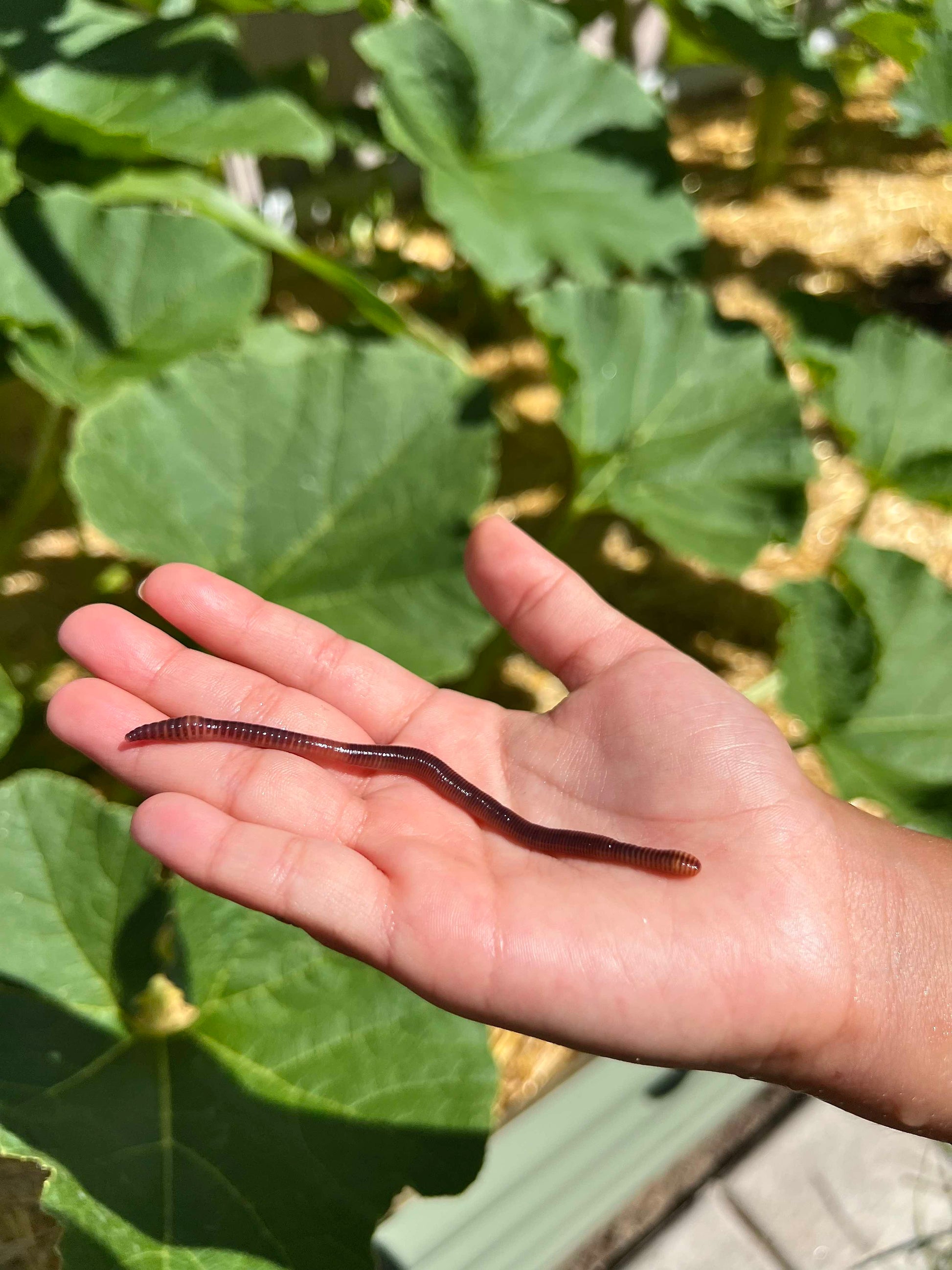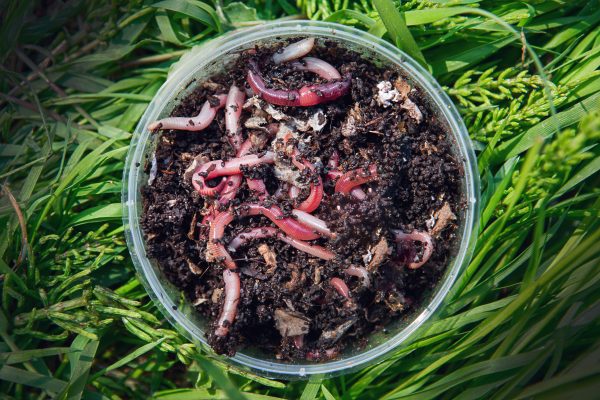Understanding the Perks of Red Wiggler Composting: How This Reliable Method Changes Organic Waste Into Nutrient-Rich Soil Modifications
Red Wiggler composting, employing the varieties Eisenia fetida, presents an engaging method to natural waste management, converting kitchen area scraps and yard particles right into valuable soil amendments. This technique not only boosts dirt fertility yet also addresses pressing environmental issues, including land fill waste reduction and greenhouse gas discharges.
What Are Red Wigglers?
Red wigglers, medically understood as Eisenia fetida, are a types of earthworm that play an essential duty in vermicomposting systems. These worms are identified by their reddish-brown shade, fractional bodies, and a distinctive capacity to grow in organic-rich settings, making them excellent for composting applications - Red Wiggler Composting. Unlike their garden-dwelling counterparts, red wigglers prefer to inhabit the top layers of dirt, where rotting issue is plentiful
Commonly gauging between 3 to 4 inches in length, red wigglers have a high reproductive price, allowing them to multiply rapidly under optimum problems. They possess an unique digestion system that enables them to process natural waste effectively, converting it right into nutrient-rich castings, which are highly valuable for plant growth.
Their tolerance to differing wetness levels and temperature level ranges better improves their utility in vermicomposting configurations, making them a preferred selection among composting enthusiasts. Furthermore, red wigglers are aerobic microorganisms, which necessitates a well-aerated composting setting, guaranteeing reliable decay. Recognizing the biological traits and behaviors of red wigglers is necessary for optimizing their usage in sustainable waste administration techniques.

Benefits of Vermicomposting
Using the power of vermicomposting offers a wide variety of farming and ecological benefits. It substantially lowers organic waste in garbage dumps, therefore minimizing methane emissions, a potent greenhouse gas. By diverting food scraps and lawn waste to vermicomposting, we sustain an even more lasting waste management system.
Additionally, vermicomposting improves soil health. The spreadings generated by red wigglers are abundant in essential nutrients, microbes, and enzymes, improving soil structure and fertility. This nutrient-rich amendment promotes robust plant growth and enhances water retention, minimizing the requirement for chemical plant foods.
Additionally, vermicomposting fosters biodiversity in the soil ecological community. The intro of useful microbes from worm castings aids in condition reductions and nutrient cycling, creating a much healthier environment for plants.
Financially, vermicomposting reduces the prices associated with chemical inputs and waste disposal. Gardeners and farmers can grow high-quality produce at reduced expenditures, adding to food protection and sustainability.
Just How to Begin Composting
Starting a composting venture can be a gratifying and straightforward procedure. To start, select a suitable area that is well-drained and obtains partial sunlight. This will assist preserve a balanced temperature level, critical for the composting procedure. Next, pick a garden compost container or produce a marked location in your garden, guaranteeing it is conveniently available for including products and harvesting garden compost.
Gather natural materials such as cooking area scraps, yard waste, and shredded paper. Go for a balanced mix of 'green' products, high in nitrogen (e.g., fruit scraps, coffee premises), and 'brown' products, rich in carbon (e.g., dried out fallen leaves, cardboard) A proportion of roughly 2:1 green to brownish materials is excellent.
Begin layering your materials, ensuring ample air flow by turning the heap on a regular basis. This promotes cardio decomposition, speeding up and lowering odors up the procedure. Display moisture degrees; the compost needs to seem like a wet sponge but not excessively damp.
Nutrient Account of Vermicompost
Composting, particularly with red wigglers, generates a nutrient-rich product called vermicompost. This natural change is differentiated by its high concentration of necessary nutrients, making it an invaluable resource for horticulture and agriculture. Vermicompost normally click this link has elevated levels of macronutrients such as phosphorus, potassium, and nitrogen, which are important for plant development. In addition, it supplies trace elements like iron, magnesium, and calcium, cultivating durable plant growth and enhancing dirt wellness.
The microbial task present in vermicompost further enriches its account, presenting helpful microorganisms and fungi that advertise nutrition accessibility and uptake in plants. This organic part help in subduing plant diseases and boosting dirt framework, bring about improved water retention and oygenation.

Ecological Impact of Composting
The ecological effect of composting, especially via making use of red wigglers, is extensive and diverse. This approach substantially lowers the volume of organic waste sent to landfills, which subsequently lessens greenhouse gas discharges, particularly methane-- a potent contributor to climate modification. By drawing away organic products from garbage dumps, red wiggler composting not only assists reduce ecological deterioration yet additionally advertises sustainable waste monitoring methods.

Additionally, composting contributes to carbon sequestration, as the procedure captures co2 from the ambience and stores it in the dirt. This natural process help in combating environment modification while enriching the dirt - Red Wiggler Composting. Overall, red wiggler composting presents a feasible, environment-friendly remedy for waste monitoring and ecological sustainability, advertising healthier communities and a more sustainable future
Verdict
In final thought, Red Wiggler composting offers as an efficient method for transforming organic waste right into important dirt changes. The procedure not only boosts soil fertility and framework but additionally reduces ecological problems linked with waste disposal.
Red Wiggler composting, utilizing the varieties Eisenia fetida, presents an engaging approach to natural waste monitoring, converting cooking area scraps and yard particles right into important dirt amendments. Unlike their garden-dwelling counterparts, red wigglers favor to occupy the top layers of dirt, where decomposing issue is bountiful.
The castings created by red wigglers are abundant in important nutrients, germs, and enzymes, improving soil framework and fertility. The nutrient-rich results of red wiggler activity enhance dirt framework, rise water retention, and promote biodiversity within the soil environment.In verdict, Red Wiggler composting offers as an effective method for transforming organic waste into beneficial soil changes.